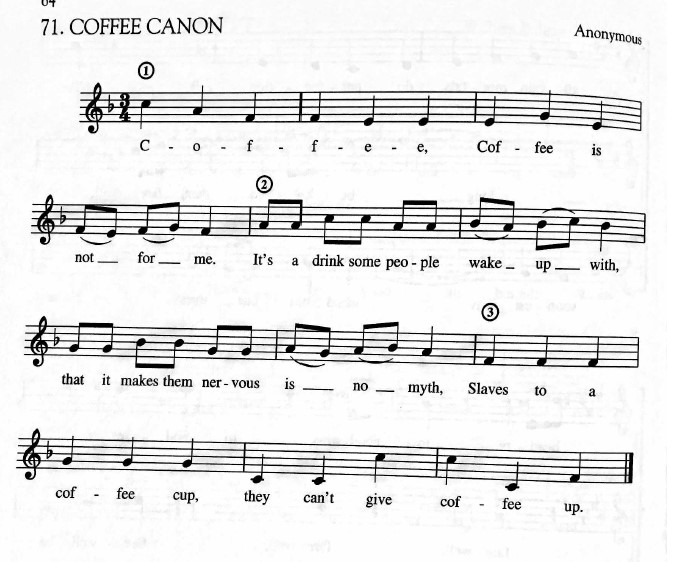by Developing Voices contributing author Jennifer Berroth ~
You’re a month into teaching your choir students. You have established your classroom routine and are in the thick of learning concert music. You are encouraged by their progress, but you sense that your students are about to hit a late-September wall. So how do you keep building fundamental singing technique without losing student engagement? Try a new routine as you continue to build technique.
Choral Training instead of Warm-ups
By the time my middle school students arrive to choir, many of them have been talking, laughing—and sometimes yelling—since they got on the bus that morning. It’s safe to say their voices are “warmed up.” (If you need confirmation, just ask their core subject teachers!) I find this is a good time to ditch traditional “warm ups” and replace them with some choral training exercises. After some light stretching and breathing exercises, 5-7 minutes of choral training can be a great way to reinforce healthy singing and work on a skill pertinent to your concert rep. For example, my students recently sang the National Anthem before a baseball game. The beginning word is “Oh,” and the kids were struggling to shape their “Oh” vowel as a tall and open “ɔ.” To work on this, we sang a descending arpeggio alternating “ɔ” and “ɒ”.* The goal was to minimize jaw movement, lift the soft palate, and reinforce proper shaping of the vowel. When we transitioned into our song repertoire, the muscle memory was fresh, and I could refer back to our training exercise as needed. Arpeggios, tongue twisters, and rounds can all be used to reinforce various techniques.
*To take this exercise a step further, we sing “no” on the same arpeggio, but still focus on shaping the vowel to be taller and lifted. We slowly and smoothly move our heads in a “no” motion while singing to eliminate tension through the back and neck.
Other Tongue Twisters and Rounds
Lighten the mood in your classroom by singing something challenging or silly—and build technique in the process!
1. Alphabet arpeggio: Work for quick consonants, long vowels, round space, and smooth transitions between letters.

*Try singing the letters backwards once you’ve mastered the exercise.
2. Tongue-Twister: “Who Washed Washington’s White Woolen Underwear When Washington’s Washerwomen Went West”. Use this one to work on chewy “Ws”—use consistent breath to sing with energy on one consistent note.
3. “One Bottle O’ Pop”: Round: Emphasize singing on the vowel with quick consonants. In meters of three, check out the music here:
4. “COFFEE” Round: Use to reinforce unified vowels and explore phrasing.

From the King Singer’s Book of Rounds, Canons, and Partsongs-Hal Leonard Corporation
Have a toolbox and use it
I keep a basket full of random toys, capes, masks, and other silly things that I pull out once a week (sometimes more) to keep students engaged, provide visual aid, and teach about technique. Here are a few of my go-to tools:


I use the football in two different ways. First, I’ll have the students throw the football back and forth to me and sing a glissando with lifted palates as they throw. When we throw a ball, we are taught to “follow through” after the ball is released. Similarly, when we sing, we must “follow through” with air and energy.
Second, I use the Football B to help demonstrate the optimal shape we’re trying to achieve with our vowel. To make it fun, I rotate the ball from horizontal (Football A) to vertical (Football B) and back again while students sing. It’s okay to let students experiment singing with good and bad technique so they can hear—and feel—the difference.

The Hoberman sphere, like the football, has a variety of applications. I use it most often to teach consistent airflow and gradual dynamic changes. As the choir sings, I slowly expand and contract the Hoberman sphere. The students react and gradually crescendo and decrescendo accordingly. By varying the speed at which I open and close the sphere, students learn that they must use a strong and steady airflow in order to keep up—they also think it’s hilarious to really exaggerate the changes. Allow students to “conduct” with the Hoberman sphere for extra fun!
Chocolate kiss
I tell my students to imagine they have a chocolate kiss on their tongue but they don’t want the pointed end to touch the roof of their mouth. This helps them to feel a lifted soft palate. We imagine having that chocolate kiss for a few days in class and then if they seem to be grasping the concept, I bring in real chocolate kisses. The students get to place them on their tongues for a few seconds to remember that lifted soft palate sensation and then they can eat it. We never try to sing with the chocolate in our mouths.

Finally, I encourage teachers to read Gadgets for Great Singing by Christy Elsner. I use many of her tips and tricks in the classroom. All are fun and engaging for middle school students, and could be applied at the high school level as well.
Have fun shaking things up in your classroom while continuing to develop good technique.
Developing Voices author Jennifer Berroth is Choral Director at Leawood Middle School in Kansas and also serves as Associate Music Director of Lee’s Summit Summer Singers with The William Baker Choral Foundation.


Leigh Ann Pierce says
Yes – LOVED this! Thanks for all these great ideas – some are similar to what I’ve used/done but lots of fresh thoughts too. Definitely goes in my Keeper file!
Leigh Ann Pierce
Classical Christian Choir of Central Kentucky
Adam Paltrowitz says
Jennifer, what an insightful and practical post! Thanks so much for sharing your insight and experience with us!